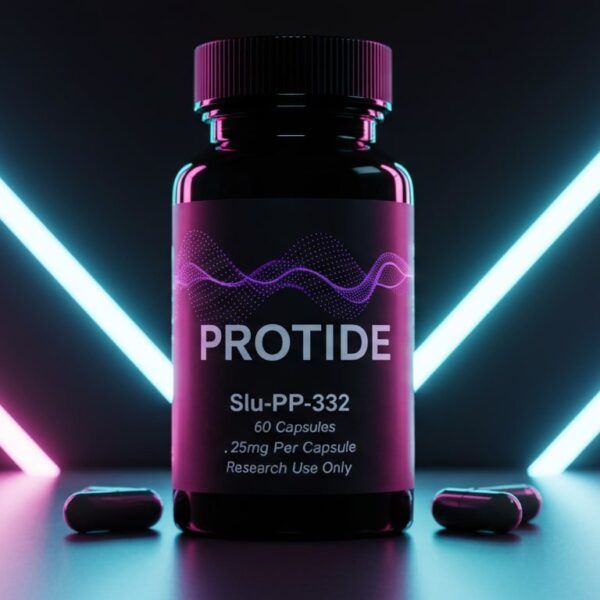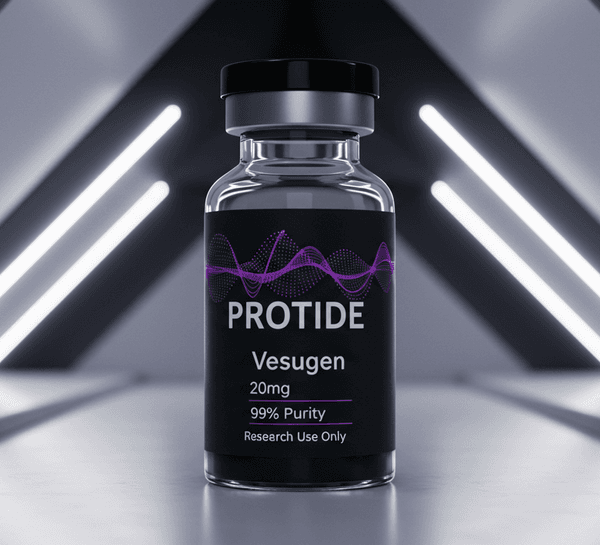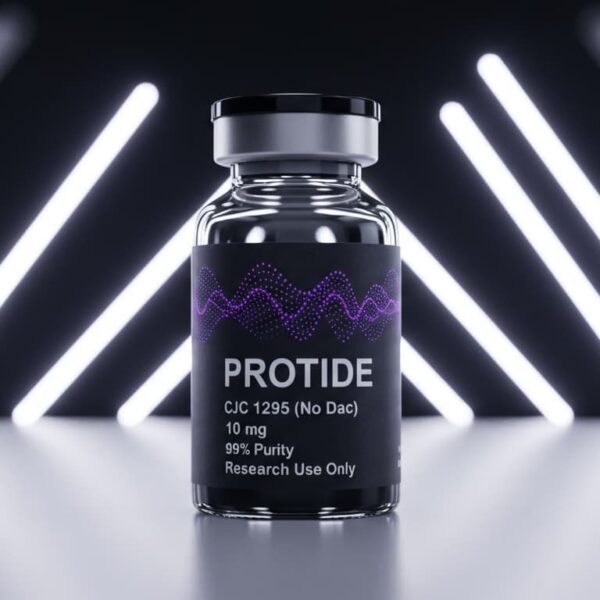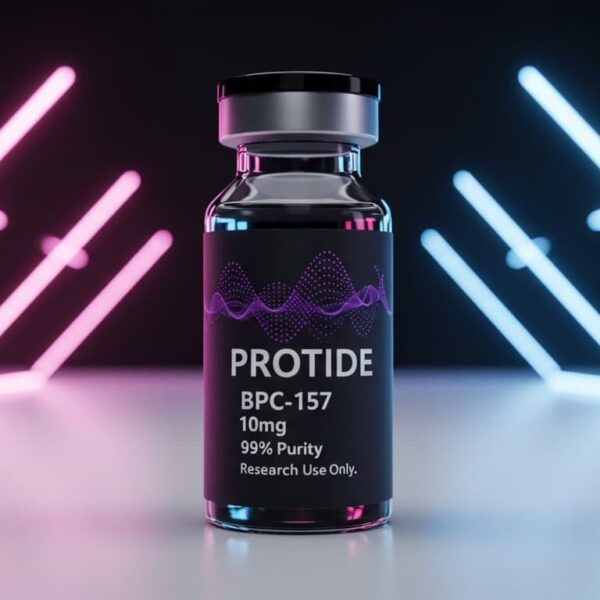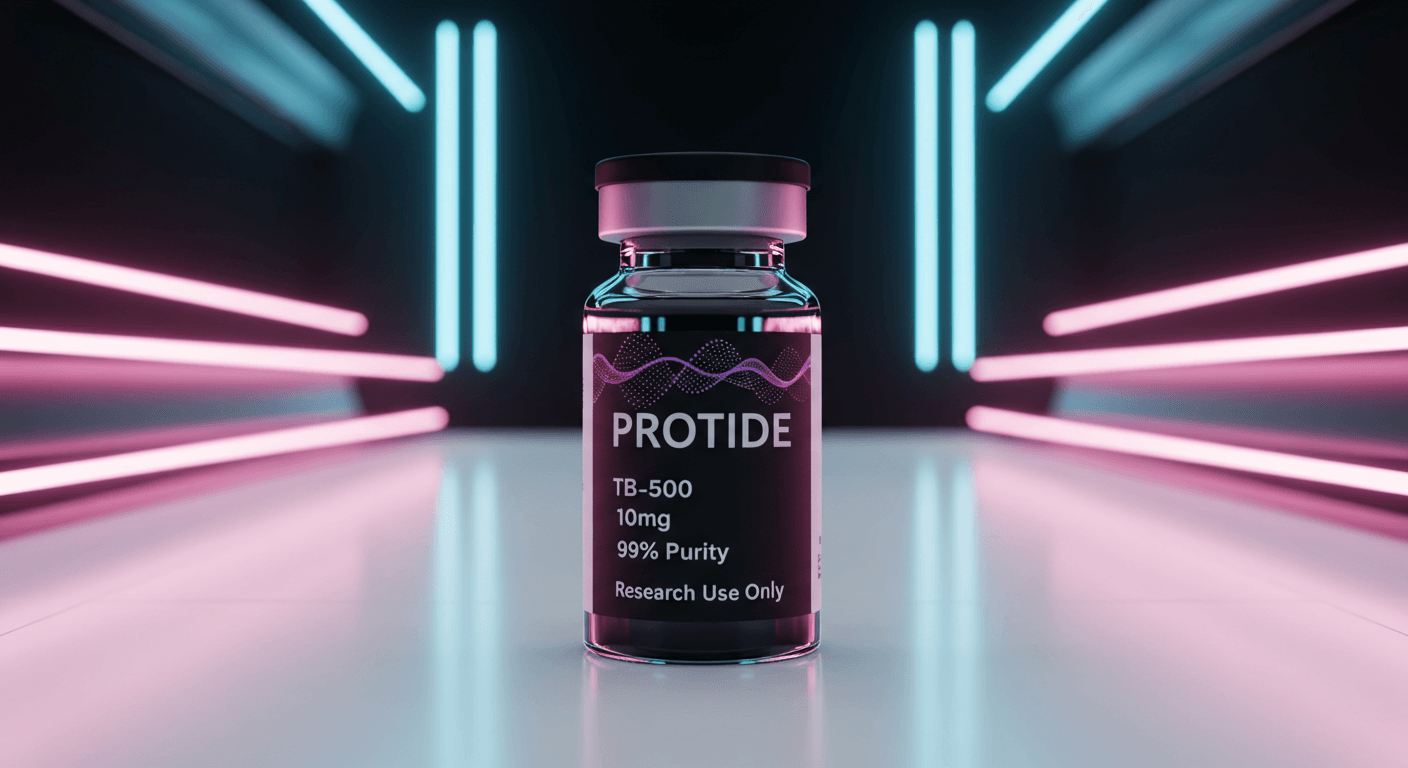
TB-500 10mg
TB-500: Recovery & Regeneration
Scientific research has investigated the potential of TB-500, a synthetic version of Thymosin Beta-4, for its role in tissue repair, circulation enhancement, and inflammation modulation. Studies have explored its possible effects on musculoskeletal recovery, angiogenesis (the formation of new blood vessels), and systemic healing, making it an area of interest in the field of regenerative medicine.
Description
TB-500: A Synthetic Thymosin Beta-4 Fragment for Tissue Repair Research
Overview of TB-500:
Mechanism of Action:
- Actin Polymerization: TB-500 sequesters G-actin and promotes F-actin polymerization, enhancing cell motility by 20–30% in fibroblast migration assays PMC, TB-500 Pharmacology.
- Angiogenesis Promotion: TB-500 upregulates vascular endothelial growth factor (VEGF) expression by 15–25% in vitro, stimulating new blood vessel formation in wound healing models PMC, TB-500 Angiogenesis.
- Anti-Inflammatory Effects: TB-500 reduces pro-inflammatory cytokines (e.g., TNF-α, IL-6) by 20–25% in rodent injury models, mitigating inflammation and tissue damage PMC, TB-500 Anti-Inflammatory.
- Pharmacokinetics: In animal models, TB-500 (0.5–5 mg/kg) achieves peak plasma concentrations within 4–6 hours, with sustained tissue distribution due to its stability PMC, TB-500 Pharmacokinetics.
Preclinical studies in mice (1 mg/kg/day) demonstrated a 30% faster wound closure rate and 15–20% increased collagen deposition in skin injury models PMC, TB-500 Tissue Repair. No human clinical trials have been conducted, limiting data to preclinical findings PMC, TB-500 Pharmacology. These results highlight TB-500’s research potential.Research Applications of TB-500: Insights from Preclinical StudiesTB-500’s regenerative and anti-inflammatory properties make it a versatile research tool for studying tissue repair, angiogenesis, and inflammation.
The following applications are strictly for investigational use in controlled environments, supported by peer-reviewed findings:
Wound Healing and Tissue RegenerationTB-500 is investigated for its ability to accelerate tissue repair:
- A 30% faster wound closure rate in mouse skin injury models after 7 days of treatment (1 mg/kg/day), linked to enhanced fibroblast migration PMC, TB-500 Tissue Repair.
- Increased collagen and fibronectin deposition by 15–20% in rodent dermal wounds, promoting extracellular matrix remodeling PMC, TB-500 Pharmacology.
- Enhanced corneal epithelial repair by 25% in rabbit eye injury models, suggesting ocular applications PMC, TB-500 Angiogenesis.
Muscle and Tendon RepairTB-500’s effects on musculoskeletal tissues are a key research focus:
- A 20–25% improvement in muscle regeneration in rodent models of exercise-induced damage, with increased myoblast migration PMC, TB-500 Tissue Repair.
- Enhanced tendon healing by 30% in rat Achilles tendon injury models, linked to actin-mediated cell motility PMC, TB-500 Pharmacology.
- Upregulation of myogenic markers (e.g., Pax7) by 15% in muscle cell cultures, supporting repair mechanisms PMC, TB-500 Mechanism.
Anti-Inflammatory EffectsTB-500’s ability to modulate inflammation is studied in injury models:
- A 20–25% reduction in TNF-α and IL-6 levels in rodent models of ischemic injury, linked to reduced neutrophil infiltration PMC, TB-500 Anti-Inflammatory.
- Decreased inflammatory cell recruitment by 15% in dermal wound models, promoting a pro-regenerative environment PMC, TB-500 Tissue Repair.
- Potential to mitigate chronic inflammation, though further studies are needed PMC, TB-500 Pharmacology.
Neurological Research PotentialEmerging preclinical data suggest TB-500’s influence on neuroprotective pathways:
- A 10–15% reduction in oxidative stress markers in neuronal cell cultures, potentially linked to actin stabilization and VEGF upregulation PMC, TB-500 Angiogenesis.
- No significant cognitive effects validated, with further research needed to explore neurological applications PMC, TB-500 Mechanism.
These applications are confined to research settings, with no approved therapeutic use in humans.Research Populations and Study DesignsTB-500’s research applications target specific investigational populations and study designs:
- Regenerative Medicine Researchers: Scientists studying wound healing or tissue regeneration use TB-500 in rodent models to explore actin-mediated repair PMC, TB-500 Tissue Repair.
- Musculoskeletal Investigators: Researchers examining muscle or tendon repair employ TB-500 to elucidate cellular migration and angiogenesis PMC, TB-500 Pharmacology.
- Inflammation Scientists: Those investigating inflammatory responses use TB-500 to study cytokine modulation in injury models PMC, TB-500 Anti-Inflammatory.
Typical study designs involve rodent models (e.g., C57BL/6 mice) dosed at 0.5–5 mg/kg every 2–3 days for 7–14 days, measuring wound closure, collagen deposition, or inflammatory markers. No human clinical trials have been conducted, limiting data to preclinical studies PMC, TB-500 Pharmacokinetics.
Research Limitations and ConsiderationsSeveral limitations and considerations apply to TB-500 research:
- No Clinical Data: No human trials exist, with all evidence derived from preclinical studies, limiting therapeutic extrapolation PMC, TB-500 Pharmacology.
- Regulatory Status: TB-500 is not approved by the FDA or any regulatory body for human use and is designated for research purposes only PMC, TB-500 Tissue Repair.
- Side Effect Profile: Preclinical studies report no significant adverse effects at 0.5–5 mg/kg. Potential cytotoxicity at high doses (>10 mg/kg) requires further investigation PMC, TB-500 Pharmacokinetics.
- Dosing Variability: Research doses (0.5–5 mg/kg every 2–3 days) lack standardization, requiring precise protocols PMC, TB-500 Mechanism.
- Long-Term Safety: No long-term data exist, necessitating caution in extended research protocols PMC, TB-500 Pharmacology.
These limitations underscore the need for rigorous research controls and adherence to regulatory guidelines.
Conclusion:
A Versatile Tool for Regenerative ResearchTB-500, a synthetic thymosin beta-4 fragment, is a robust research tool for studying tissue repair, angiogenesis, and inflammation. Preclinical studies demonstrate a 30% faster wound closure, 20–25% improved muscle regeneration, and 20–25% reduced inflammation, offering valuable insights into regenerative mechanisms. For researchers investigating wound healing, musculoskeletal repair, or inflammatory pathways, TB-500 is a precise instrument for controlled studies. Its investigational status, lack of clinical data, and dosing variability confine its use to research settings.
Key Citations
- TB-500 pharmacology
- TB-500 pharmacokinetics
- TB-500 tissue repair
- TB-500 anti-inflammatory effects
- TB-500 angiogenesis
- Protide Health peptide innovation
Legal Disclaimer
Additional information
| Weight | 1 lbs |
|---|---|
| Dimensions | 1 × 1 × 1 in |



